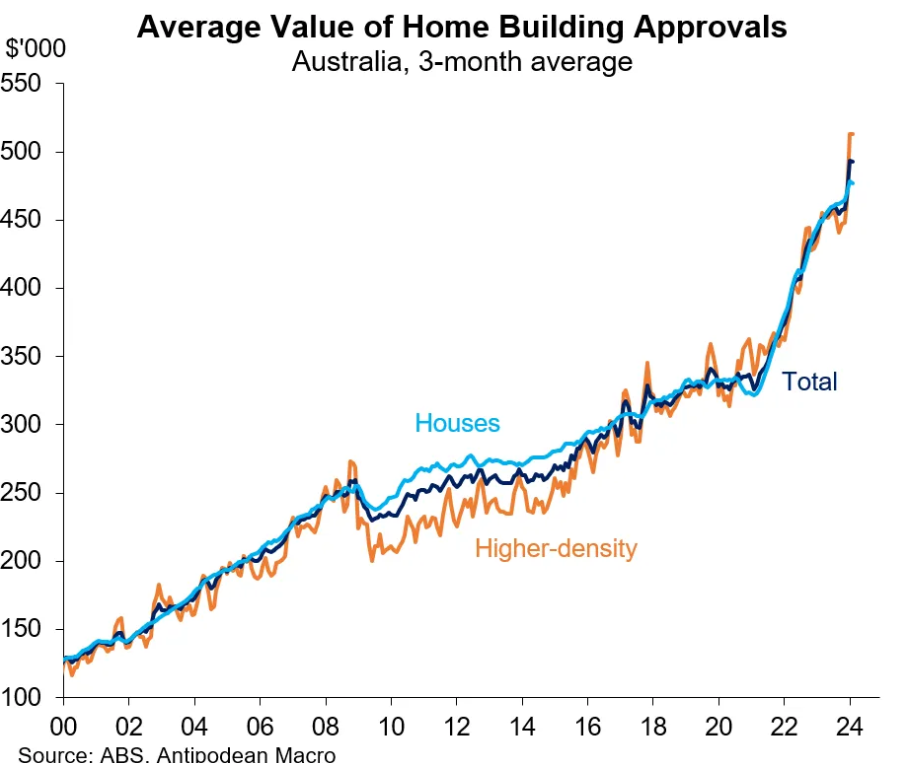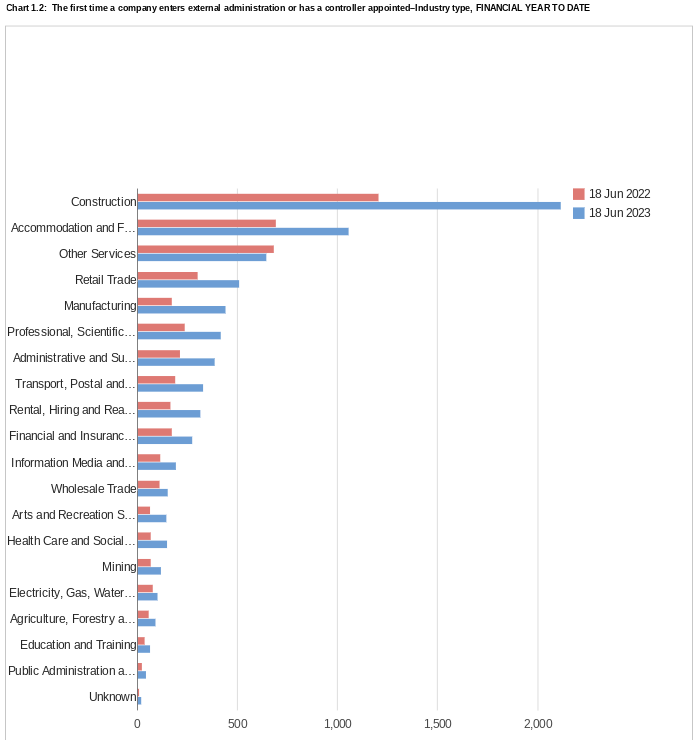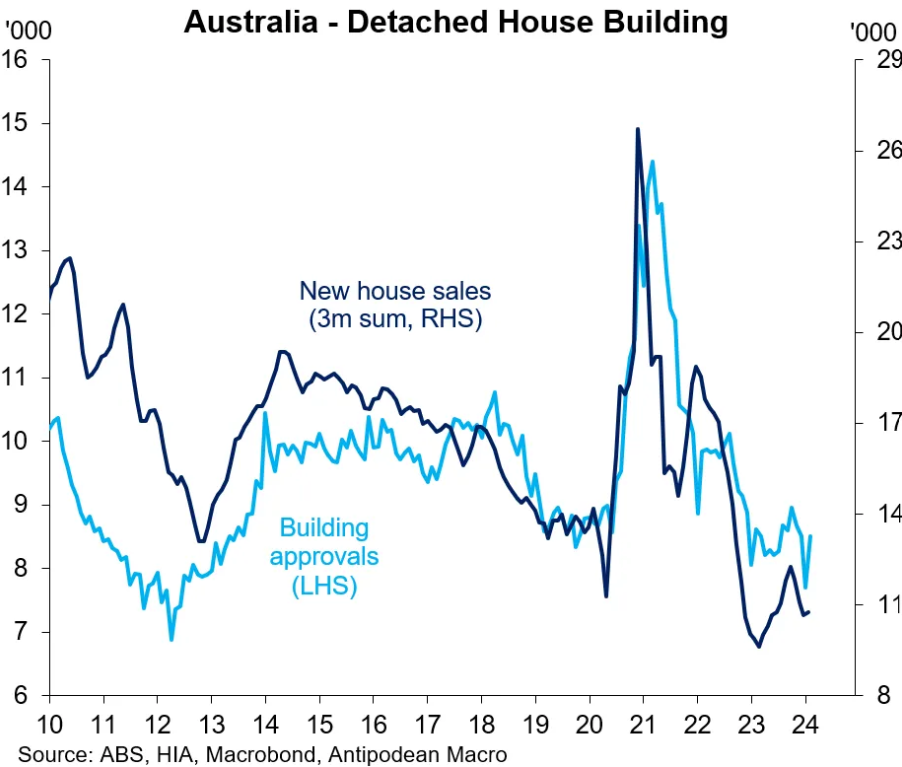Last week’s dwelling approvals data from the Australian Bureau of Statistics (ABS) showed that the nation approved only 12,400 homes for construction in February in trend terms:

This was the worst monthly result since April 2012 and represents a run rate around 40% below the Albanese government’s 1.2 million housing target, which requires 20,000 homes to be built monthly for 60 consecutive months.
A key reason why Australia is struggling to build enough homes is the hyperinflation of costs since the start of the pandemic.
The following chart from CBA’s economics team shows that residential construction costs have soared by between 30% and 40%, depending on the measure, since the beginning of the pandemic in March 2020:

Justin Fabo at Antipodean Macro has presented the construction cost hyperinflation differently in the following chart:

Even though dwelling approvals have collapsed to 12-year lows, the average value of home building approvals has soared by around 50% since the start of the pandemic.
Therefore, fewer homes are being approved for construction; however, the cost of those homes has hyperinflated.
This cost hyperinflation is a crucial reason why builders are struggling to turn a profit and are falling like flies:

To add insult to injury, home builders are also competing for workers with state government ‘big build’ infrastructure projects, which has also driven up costs.
In the meantime, rising costs and decreased borrowing capacity (due to higher interest rates) have cut off actual buyer demand.
The decline in new home sales to historical lows is proof of this:

There is no way to spin this data. Australia has no chance of meeting the Albanese government’s lofty housing targets so long as these conditions are present.
The solution to the housing shortage is obvious: net overseas migration must be slashed to a level below the nation’s capacity to build homes or infrastructure.
Otherwise, Australia’s housing crisis will continue to worsen.

